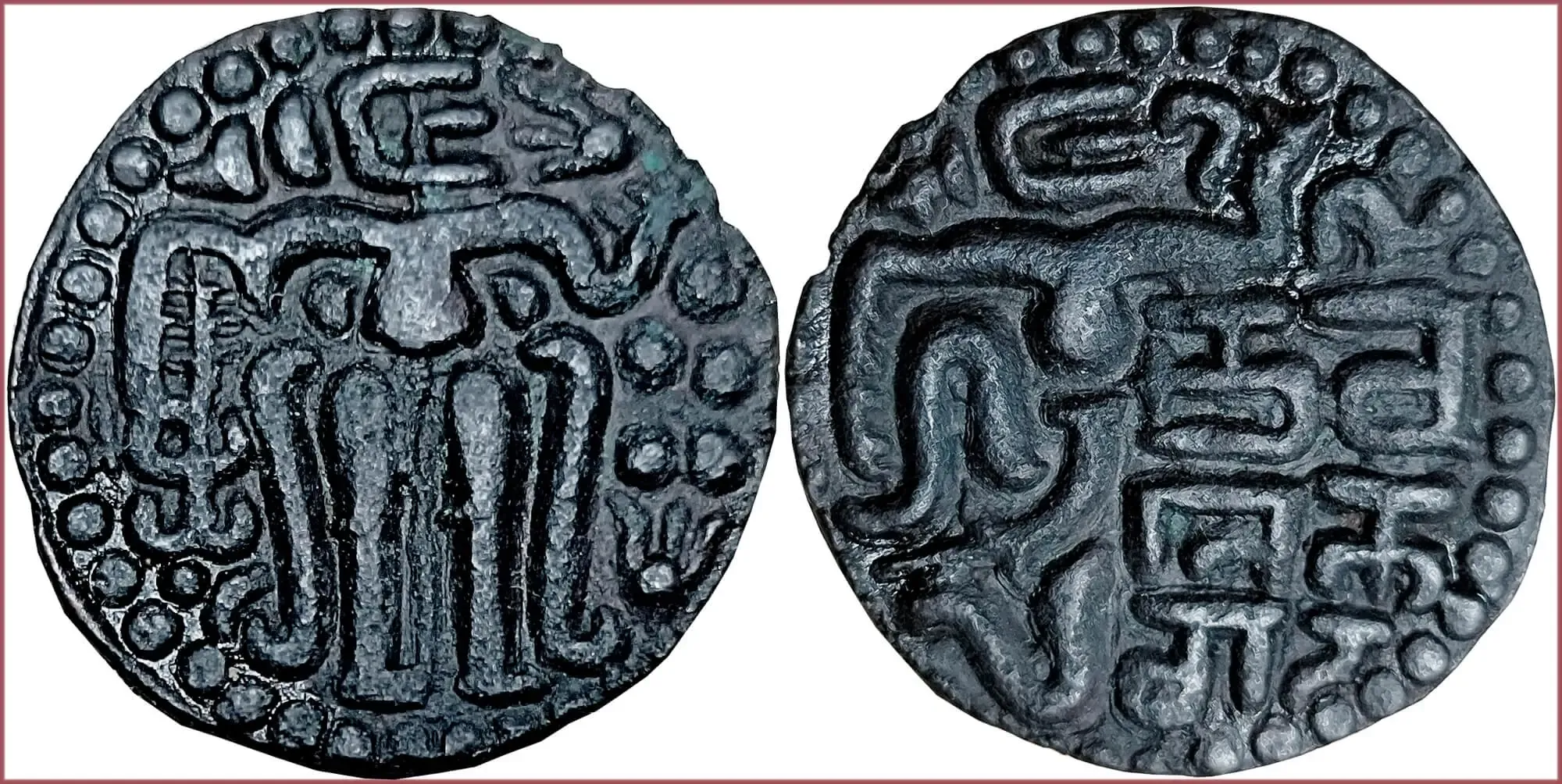MASSA: COIN OF DAMBADENIYA
Massa, 1273-1301: Kingdom of Dambadeniya (Sri Lanka)
Kingdom of Dambadeniya — medieval kingdom in what is present-day Sri Lanka (1220-1345).
Ruler: Bhuvanaikabahu I — King of Dambadeniya in the end of the 13th century.
The King in the symbolic form of an octopus ("Octopus Man") holds a flower — a traditional local ornament.
Ruler's name in Devanagari script.
A coin in a similar design was produced for several centuries; different types were distinguished by several symbols — the names of the rulers (different dynasties and kingdoms).
- Copper: 20 mm - 3.84 g
- Reference price: 20$
COIN MASSA — WHERE & WHEN (coins catalog: by names & emitents)
- ANCIENT SRI LANKA (12th-16th centuries — Kingdom of Dambadeniya, Kingdom of Jaffna, Kingdom of Kotte, Kingdom of Polonnaruwa...): massa
- ANCIENT INDIA (10th-14th centuries — Pandya dynasty, Chola dynasty...): massa
MASSA as coin name.
Massa — ancient Indian and Sri Lankian copper coin, which was popular during the 10th-16th centuries.
The emission mainly was carried out on the lands of medieval Sri Lanka: at least on part of the island — for example, in the Kingdom of Polonnaruwa during the 12th-13th centuries, the Kingdom of Dambadeniya (13th-14th centuries) or the Kingdom of Kotte (15th century)...
As a rule, massa coins had an unchanged basic, strange for modern numismatists, recognizable design for more than five centuries in a row: a stylized image of a king holding a flower (according to other sources — a globe or a lamp) and a legend in the Sinhala language — the name of the ruler.
The weight of the coin often exceeded 4 grams.
The name massa coin probably comes from the name of the ancient coin masaka (1/12 karshapana), which for a long time (over 1000 years) was issued in different parts of India.
In turn, the term "masaka" indicated a measure of the weight of gold and silver, which in ancient times on the coasts of the Indian Ocean was paid for all kinds of offenses (such as harming animals and insects).











